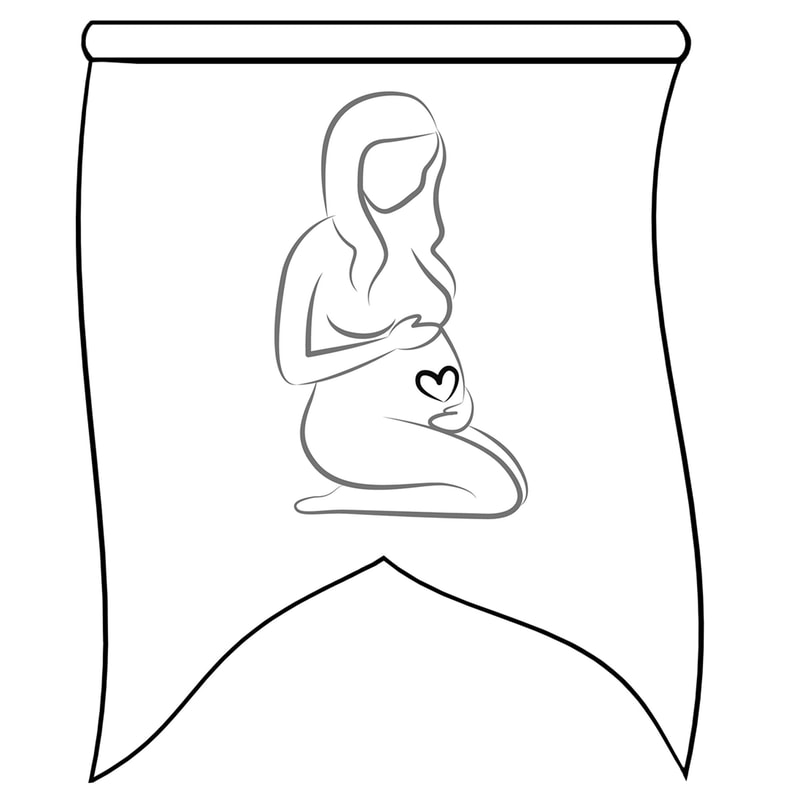IMAGE CREDIT: JERUSHA SUTTON
Active campaigns
|
WE NEED MIDWIFERY CONTINUITY IN THE HOME
Homebirth New South Wales in alliance with Homebirth Australia, Maternity Choices Australia and Maternity Consumer Network released a do-gooder campaign. The goal of this campaign is to push for ministers to make recommended changes to Medicare and regulatory processes to enable maternity care at home to be more accessible and affordable in Australia. Continuity of community based midwifery care has been recommended in EVERY state and national review into maternity services, and the National Strategic Approach to Maternity Services - these changes need to happen, NOW! Furthermore, with the increased potential for disease transmission in hospitals due to COVID-19, requests for community based midwifery care have experienced unprecedented increases. Please click the button below to join our cause.
|
|
BUNTING FOR BIRTH RIGHTS LHD CAMPAIGN
Our advocacy coordinator, Kristyn Begnell, set up this campaign through her page Bunting for Birth Rights. We are hoping for every woman, regardless of whether she is pregnant or going to give birth in the near future, to contact her local health district to campaign for women to be able to access the birth of their choosing, with who they choose, with the pain relief of their choice. Given the current COVID-19 pandemic, this is overwhelmingly not the case. Click the button below to see the campaign.
|
Position Statements and current advocacy information
|
MEDICARE FOR HOMEBIRTH
|
PROFESSIONAL INDEMNITY INSURANCE
|
PUBLICLY FUNDED HOMEBIRTH PROGRAMS
|
GP REFERRAL REFUSAL ISSUE
|
OUR REPORTS
|
WHY HOMEBIRTH?
Homebirth NSW ran a survey in 2018 to investigate women’s reasons for choosing homebirth and their experiences, including barriers they faced accessing private midwifery care. Women were asked to say why they chose homebirth. They could select all that applied from a list of options and could also select ‘other’ to give different reasons or more information. The top reasons women gave for choosing to give birth at home related to avoiding interventions / achieving a normal, physiological birth, feeling safer and more comfortable at home and wanting continuity of midwifery care. There were also significant proportions of women who felt their preferences would not be met in hospital and who had experienced trauma in a previous hospital birth. This report highlighted the main reasons women seek to birth at home with a Privately Practising Midwife.
|
|
GP (GENERAL PRACTITIONER) REFERRAL REFUSAL
An investigation into the reasons for Australian GPs refusing referral to Privately Practising Midwives. Upon realising they are pregnant, 90.1% of Australian women will first consult a General Practitioner (GP) with the remainder of women consulting an Obstetrician (OB), midwife or seeking no consultation at all. This statistic suggests that Australian GPs are the gatekeepers to maternity care, being most commonly approached to connect women with their potential pregnancy care providers and inform them of their birthing options. Research supports that midwife-led continuity of care increases rates of spontaneous vaginal birth and reduces the use of regional analgesia, potential for preterm birth and foetal loss, improving maternal morbidity, neonatal mortality and women’s satisfaction with their pregnancy and birth, yet less than 10% of Australian women currently access this model. Why are referral rates so low? The answer lies with the Gatekeeper GP.
|
|
THE ECONOMIC IMPACT OF HOMEBIRTH ON THE AUSTRALIAN ECONOMY
The number of women giving birth without medical intervention is progressively reducing. While some surgical and assisted births are entirely necessary, and some are elected by the mother, many are due to unnecessary and undesired hospital interventions. Not only do these hold significant health repercussions for women and babies, but they also cost the public purse too! We theorised that homebirth can provide not only an optimal environment for birth to unfold naturally, but can also reduce financial investments of women, healthcare services and government, when made more accessible. We summarised the financial impacts of birth interventions on women at a very basic level to determine the financial costs associated with antenatal, intrapartum and postnatal care when provided under different models of care by meta-analysis of available scientific literature. We observed an overall cost-saving to the public purse of more than $390 million if women were funnelled into homebirth models of care rather than the public and private hospital system. This report did not explore the financial repercussions of continued healthcare services like mental health, urogynaecological and physiotherapy services, often required by women after high-intervention births. As always, the choice of birth place and care provider should remain with the woman, and the funding provided to women should be non-discriminatory.
|



